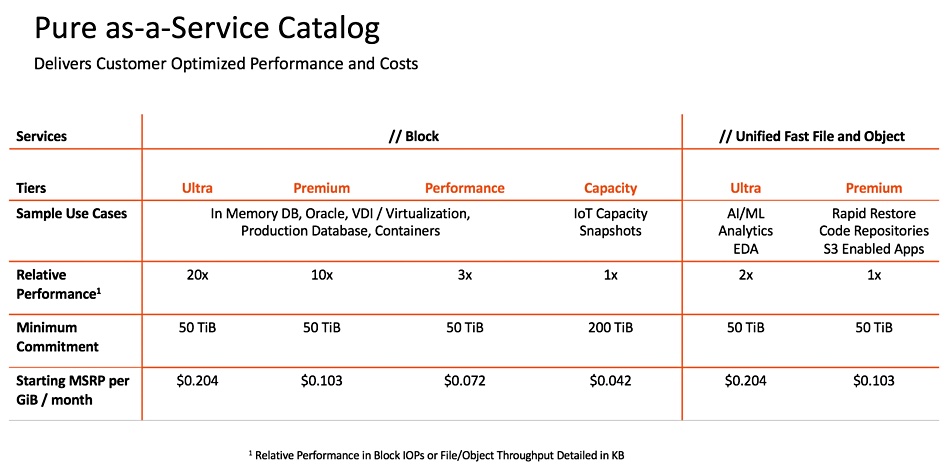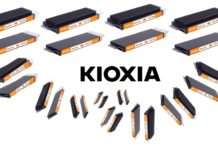Pure Storage has updated Pure-as-a-Service with service catalogs, transparent pricing, a cheaper entry price for block storage and a subscription version of the FlashStack reference architecture.
Pure products are available on-premises as a pay-as-you use managed service or in the cloud. With this update the company aims to make procurement of all its technology akin to ordering services in the public cloud.
Rob Walters, GM for Pure as-a-Service, said today in a press statement: “With the new service catalog and expanded offerings, we are once again leading the market in delivering the flexibility and transparency that customers are looking for in subscription services to accelerate their initiatives.”
Susan Middleton, research director at the tech analyst firm IDC, offered a supportive quote: “Customers want cost transparency, simplicity and operational efficiency, as well as a straightforward on-ramp to the cloud that enables them to preserve capital.”
There will be tiers
Pure as-a-Service is delivered wholly via partners. There are now four block and two unified file and object tiers in the catalog.
The block tiers have different performance levels;
- Capacity Tier – lower commitments with a minimum of 200 TiB, and for tier 2 workloads, decreasing the minimum entry point by one third. Other tiers retain their minimum commitment of 50 TiB .
- Faster Performance Tier to accelerate hybrid and multi-cloud environments.
- Even faster Premium Tier to support specialised tier 1 workloads such as containers and test and dev applications.
- The fastest UItra Tier designed for in-memory databases.

Block party
Pure is following StorOne and making its prices public. //Block Capacity is the cheapest block plan, with a 33 per cent reduction in the minimum commitment. The 200TiB total monthly cost is $4,098, based on $0.020/GiB/month charge. A 400TiB subscription for 36 months works out $5,322/month based on $0.017/GiB/month..
Pure block and file offerings are included in Pure aaS but only the block services are available in the AWS and Azure clouds. There is a unified subscription for hybrid cloud deployments. Subscriptions are listed in the Pure Service Catalog and can be ordered from it.
The array hardware and software can be located in a customer’s premises or a co-location centre with a connection to the public cloud. This can use AWS DirectConnect, Azure ExpressRoute or Google Partner Interconnect.
A software-only subscription will run in the public cloud. Non-disruptive expansions and maintenance are included in Pure aaS and customer installation is managed and monitored through the Pure1 service.
Customers can transition Pure kit bought outright to the Opex Pure aaS model with an Active Cluster set up combining the Capex and Opex systems. Volumes are migrated non-disruptively to the Pure aaS kit and then Pure removes the old Capex array.
FlashStack becomes Full Stack as-a-Service
Pure kit has been a component of the FlashStack converged system reference architecture, integrated with Cisco network switches and UCS servers, since 2016. Pure will now offer Full Stack as a service, with its partners providing compute and networking options. This is built on FlashStack, and supports the existing Cisco-validated designs.
Use cases, according to Pure, include Oracle RAC, VMware Horizon View with 2,000 users and Citrix Xen Desktop with 1,250 users. Example pricing for Xen Desktop is $16,000/month with 125TiB capacity directly connected. It’s $20,800/month if the storage is network-connected.
Pure-as-Service launched in September 2019 as a rebranding of the company’s ES2 (Evergreen Storage-as-a-Service). Here is an evolution chart for your edification.

Pure with Pure as-a-Service, Dell Technologies with APEX, HPE with GreenLake and NetApp with Keystone now all have cloud-like branded subscription services. Nutanix is also moving to subscriptions.








